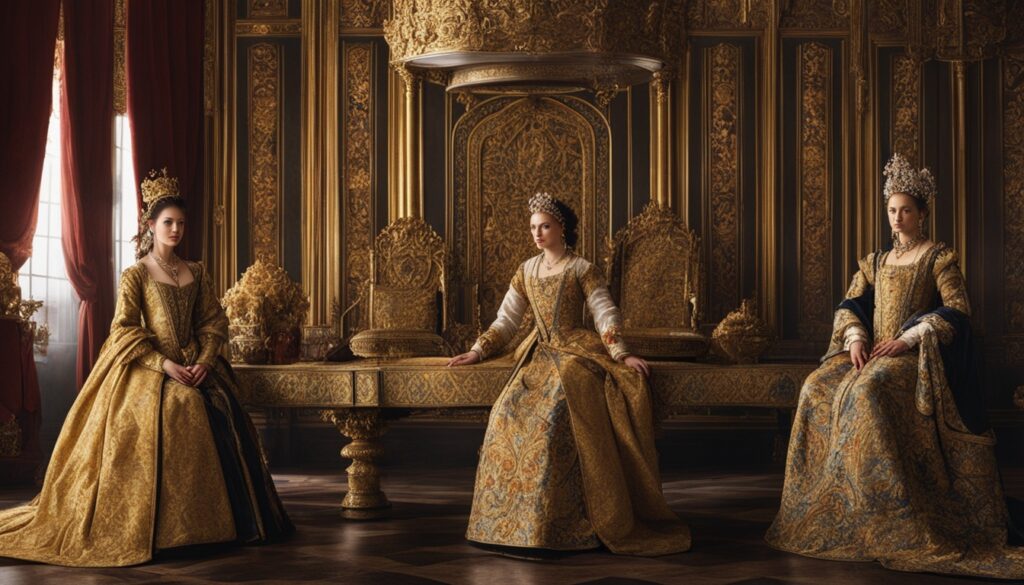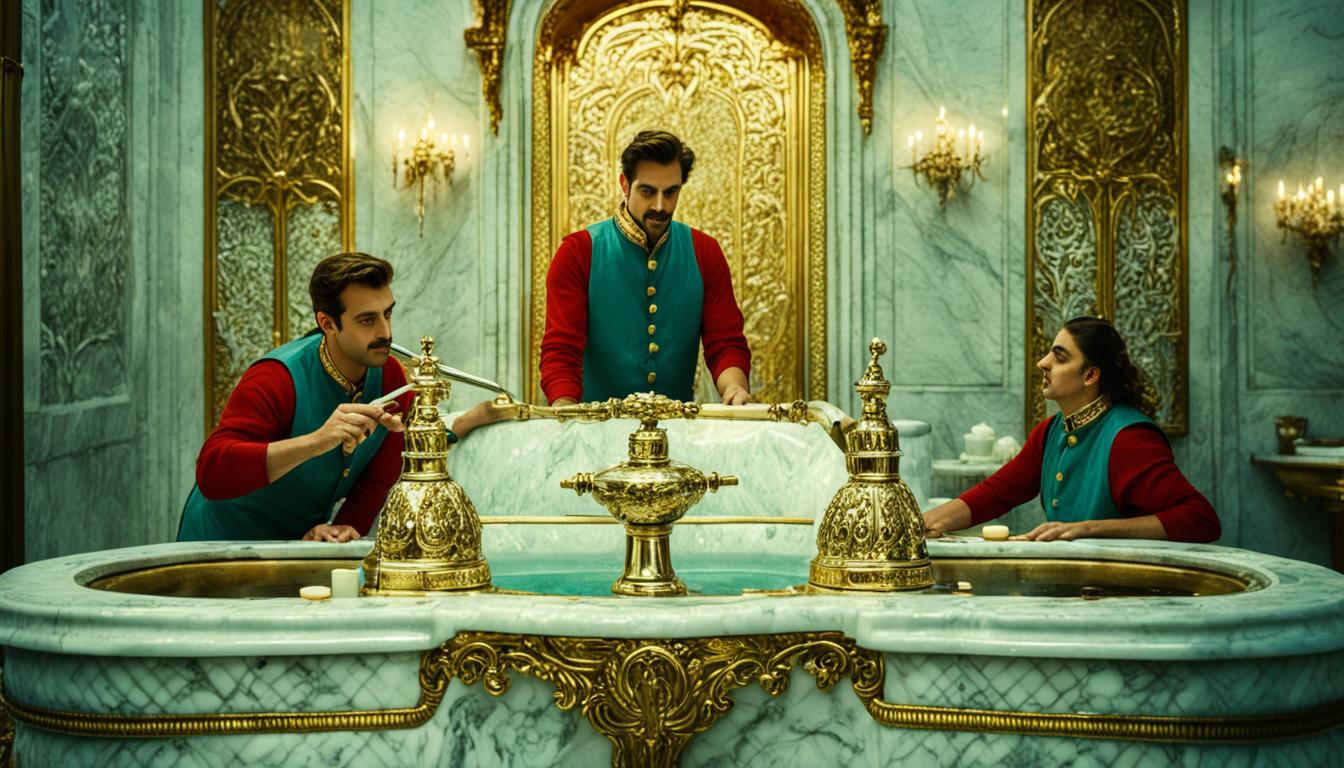In the 1500s, British royal staff had a special job that might surprise us today. The Groom of the Stool was a noble who helped the king with his private needs. This role was more than just about bathroom help; it was a key part of the royal court’s power structure.
The Groom of the Stool took care of a fancy portable toilet called the close-stool. This velvet seat came with a pewter pot for the king’s private use. Even though it sounds like a simple job, being the Groom of the Stool meant the person was very close to the king. It was a dream role for ambitious courtiers.
Key Takeaways
- The Groom of the Stool was a prestigious position in the British royal household
- This role involved assisting the king with personal hygiene tasks
- The close-stool was a luxurious portable toilet used by British monarchs
- Grooms of the Stool often became trusted confidants to the king
- The position granted unique access and influence within the royal court
The Evolution of the Groom of the Stool
The Groom of the Stool began as a basic job in the Tudor era. It became a key role in history. Initially, these attendants helped kings with personal hygiene and managed their diets and health.
Henry VIII’s reign brought big changes. The Groom took on financial and administrative tasks. They became crucial in the royal court, commanding respect and fear from others due to their knowledge of the king’s secrets.
Notable Grooms included Hugh Denys and Sir Anthony Denny. Denys worked under Henry VII, while Denny served Henry VIII. Both held significant influence in the palace.
This position was exclusive to kings. When Elizabeth I became queen, she created the role of First Lady of the Bedchamber. This highlights the evolving nature of the Groom’s role over time.
British Kings’ Bathroom Attendants: More Than Just Toilet Duty
The Groom of the Stool did more than just clean the king’s bathroom. They managed the king’s private rooms and his clothes. They even took care of the royal money, showing how important they were in the royal family.

Some Grooms, like Sir Anthony Denny, could sign documents for the king. This trust gave them a lot of power. They could influence big decisions and even affect the English Civil War in the 1600s.
Being close to the king was not always safe. Sir Henry Norris, a Groom of the Stool, lost his life with Anne Boleyn. His story shows the risks and rewards of being so close to the king. The Groom’s role was both powerful and dangerous.
The Close Stool: A Royal Throne
In the Elizabethan era, servants and palace attendants had special roles. They took care of the royal needs in unique ways. The close stool, a portable toilet, was a symbol of luxury.
This fancy piece had a velvet-cushioned seat and was made of rich materials. It was perfect for the king’s comfort.
The Groom of the Stool was a key figure among palace attendants. He made sure the close stool was always clean and ready for the king. The name of this job came from this special chair.
Queens didn’t use this service. They had their own attendants, like the Chief Gentlewoman of the Privy Chamber. These servants took care of the queen’s personal needs in a similar way.
The use of the close stool and its attendant started to decline in the mid-1700s. Sir Michael Stanhope was the last to do the full job for Edward VI. This ended an era in royal bathroom customs, similar to how America’s independence changed historical customs.
From Groom of the Stool to Groom of the Stole
Over time, the role of Groom of the Stool changed. By the late 1700s, it was called the Groom of the Stole. This change meant moving from personal hygiene to taking care of the king’s clothes. Despite this, the role remained prestigious among royal staff.
The Groom of the Stole took on new responsibilities. They worked closely with the First Gentleman or Lady of the Bedchamber. Their duties included giving the monarch their first outfit of the day. They also managed the royal bedchamber.
This role continued through the Hanoverian kings’ reigns. It lasted until Queen Victoria became queen in 1837. King Edward VII briefly revived it. However, by the 1900s, the position was abolished. This shows how royal traditions changed over time, adapting to new values on privacy and royal duties.

Leave a Reply